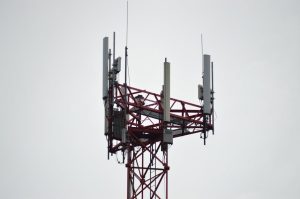
Mapping the Fiber Landscape: Key Players and Projects Across Africa
Mapping the Fiber Landscape: Key Players and Projects Across Africa. The African continent has witnessed significant growth in the telecommunications sector, driven by the increasing demand for high-speed internet and reliable connectivity. One of the key enablers of this growth has been the expansion of fiber optic networks, which have transformed the way people communicate, access information, and conduct business. In this article, we will explore the current state of the fiber landscape in Africa, highlighting the key players, projects, and initiatives that are driving this growth.
Introduction to Africa’s Fiber Landscape
Africa’s fiber landscape has undergone significant transformations over the past decade, with the continent witnessing a surge in fiber optic network deployments. This growth has been driven by the increasing demand for high-speed internet, particularly in urban areas, as well as the need for reliable and efficient connectivity to support economic growth and development. Today, Africa is home to a vibrant and dynamic telecommunications market, with a wide range of players, including telecom operators, internet service providers, and fiber optic network operators.
The fiber landscape in Africa is characterized by a mix of terrestrial and submarine fiber optic cables, which provide connectivity to both domestic and international markets. Terrestrial fiber optic cables connect major cities and towns, while submarine cables connect Africa to the rest of the world, providing access to global markets and services. Some of the key submarine cables serving the African continent include the SAT-3/WASC, ACE, and WACS cables, which provide connectivity to Europe, Asia, and the Americas.
Key Players in Africa’s Fiber Market
The African fiber market is highly competitive, with a wide range of players operating in the space. Some of the key players include telecom operators such as MTN, Vodacom, and Orange, which have invested heavily in fiber optic network deployments across the continent. Other players include internet service providers such as Liquid Telecom, Seacom, and Eaton Towers, which have established themselves as major players in the fiber market.
In addition to these players, there are also a number of smaller, specialized fiber optic network operators that are playing a critical role in expanding fiber connectivity to rural and underserved areas. These operators often partner with local communities and organizations to deploy fiber optic networks, providing access to high-speed internet and other digital services.
The African fiber market has also attracted significant investment from international players, including Chinese companies such as Huawei and ZTE, which have established themselves as major suppliers of fiber optic equipment and services. Other international players, such as Nokia and Ericsson, have also invested in the African fiber market, providing a range of products and services to support the growth of fiber optic networks.
Key Projects and Initiatives
There are a number of key projects and initiatives that are driving the growth of the fiber landscape in Africa. One of the most significant projects is the African Continental Backbone, which aims to establish a comprehensive fiber optic network that connects all African countries. The project is being led by the African Union, in partnership with the African Development Bank and other international organizations.
Another key project is the Smart Africa Initiative, which aims to promote the use of information and communication technologies (ICTs) to drive economic growth and development across the continent. The initiative has established a number of key programs, including the Smart Africa Scholarship Fund, which provides funding for students pursuing careers in ICTs.
In addition to these projects, there are also a number of national and regional initiatives that are driving the growth of fiber optic networks. For example, the African Union has established a number of programs to support the development of fiber optic networks, including the African Union’s Infrastructure Development Program.
Conclusion
In conclusion, the fiber landscape in Africa is rapidly expanding, driven by the increasing demand for high-speed internet and reliable connectivity. The continent is home to a vibrant and dynamic telecommunications market, with a wide range of players, including telecom operators, internet service providers, and fiber optic network operators. Key projects and initiatives, such as the African Continental Backbone and the Smart Africa Initiative, are driving the growth of fiber optic networks, providing access to high-speed internet and other digital services.
As the African fiber landscape continues to evolve, it is likely that we will see significant investments in fiber optic network deployments, particularly in rural and underserved areas. This will provide access to high-speed internet and other digital services, driving economic growth and development across the continent.




